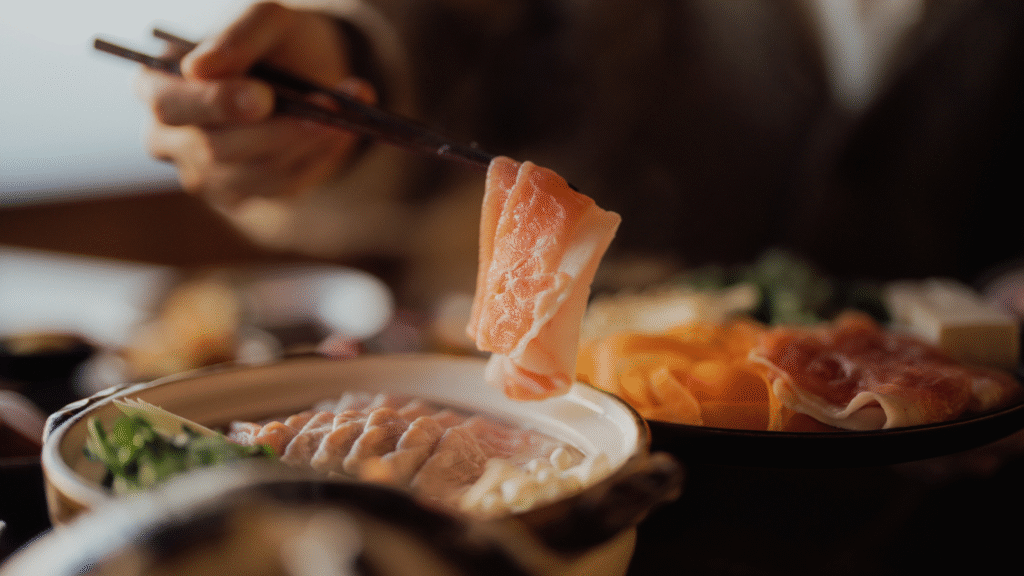Nothing says comfort like a steaming bowl of Lancashire hotpot. This traditional British dish, born in the northwest of England, is a cozy mix of tender lamb, soft potatoes, and rich gravy, baked until golden. It’s the kind of meal that warms you up on a chilly evening, with simple ingredients that come together to create something deeply satisfying. Whether you’re new to cooking or a kitchen pro, this recipe is straightforward and forgiving, perfect for a family dinner or a weekend treat. In this article, I’ll walk you through the history, ingredients, and steps to make an authentic Lancashire hotpot, plus tips to make it your own. Let’s dive into this classic dish that’s been loved for generations.
A Brief History of Lancashire Hotpot
Lancashire hotpot has roots in the industrial heart of England, where workers needed hearty, affordable meals. Back in the 19th century, families in Lancashire would layer cheap cuts of lamb or mutton with potatoes and onions in a pot, then slow-cook it over a fire or in a communal oven. The dish was practical—potatoes stretched the meal, and the long cooking time tenderized tough meat. Some say the name “hotpot” comes from the pot it was cooked in, while others link it to the way it kept workers warm. It’s a dish tied to community, often shared at gatherings. Today, it’s a beloved classic, with variations across the UK, but the core—lamb, onions, and potatoes—stays true to its origins. This history gives the dish its charm, connecting us to simpler times.
Ingredients You’ll Need
To make a Lancashire hotpot for four, gather these simple ingredients. You’ll need 600g of lamb shoulder, diced into bite-sized pieces, as it’s flavorful and tender when slow-cooked. Grab 4 large potatoes (about 800g), peeled and sliced thinly, and 2 medium onions, also thinly sliced. For the stock, use 500ml of lamb or chicken stock—homemade or store-bought works fine. You’ll also need 2 tablespoons of plain flour to coat the lamb, 2 tablespoons of butter, and a splash of Worcestershire sauce for extra depth. Season with salt, pepper, and a pinch of dried thyme. If you want a twist, some recipes add carrots or a bay leaf, but purists keep it minimal. These ingredients are easy to find, and the beauty of hotpot is how such basic items create something so comforting and delicious.
Choosing the Right Lamb
Lamb shoulder is ideal for Lancashire hotpot because it’s marbled with fat, which melts during cooking, keeping the meat juicy. If shoulder isn’t available, neck or leg can work, but avoid lean cuts—they’ll dry out. Trim excess fat but leave some for flavor. If you’re feeling adventurous, mutton (older sheep) gives a deeper taste, though it’s harder to find. Ask your butcher for advice if you’re unsure.
Potatoes and Onions: The Stars of the Dish
Potatoes and onions are the backbone of hotpot. Use starchy potatoes like Maris Piper or King Edward—they hold their shape but soften nicely. Slice them thinly (about 2-3mm) for even cooking. Onions add sweetness; white or brown ones are fine. Slice them thinly too, so they melt into the gravy. Don’t skip peeling the potatoes—it gives the dish its classic look.
Step-by-Step Cooking Instructions
Making Lancashire hotpot is simple, but it takes time to get that melt-in-the-mouth texture. Preheat your oven to 160°C (320°F). Start by tossing the diced lamb in flour, salt, and pepper. Melt a tablespoon of butter in a large pan and brown the lamb over medium heat for 5-7 minutes, working in batches to avoid crowding. Set the lamb aside. In a deep casserole dish, layer half the sliced potatoes, then half the onions, and all the lamb. Sprinkle with thyme. Add the remaining onions, then top with the rest of the potatoes, arranging them neatly in overlapping slices. Pour in the stock and Worcestershire sauce, dot the top with butter, and cover with a lid or foil. Bake for 2 hours, then uncover and bake for another 30 minutes to crisp the potatoes. Serve hot with crusty bread or greens.
Preparing the Lamb
Browning the lamb is key to building flavor. Coat it lightly in flour to thicken the gravy later. Don’t rush the browning—get a nice golden crust on each piece. Use a wide pan so the meat doesn’t steam. If you’re short on time, you can skip this step, but it adds depth.
Layering the Hotpot
Layering is what makes hotpot special. Start with potatoes at the bottom to soak up the juices. Then add onions, lamb, and more onions. Finish with a neat layer of potato slices, slightly overlapping like roof tiles. This top layer will turn golden and crisp, giving the dish its signature look.
Tips for the Perfect Lancashire Hotpot
To nail your hotpot, keep a few things in mind. First, don’t skimp on cooking time—low and slow is the way to go for tender lamb and soft potatoes. If the top browns too fast, cover it with foil. For extra flavor, brush the top potatoes with melted butter before the final bake. If you want a richer gravy, add a splash of red wine to the stock. Leftovers taste even better the next day, so make extra. Store in the fridge for up to three days and reheat gently. You can also freeze it for a month. Serve with pickled red cabbage or green beans for a classic touch. Experiment with herbs like rosemary if you want, but keep it simple to stay true to the dish’s roots.
Common Mistakes to Avoid
Don’t cut the potatoes too thick—they won’t cook through properly. Also, avoid adding too much liquid; the stock should just reach the top potato layer, not cover it. Finally, don’t skip seasoning each layer lightly—it makes a big difference to the final flavor.
Variations to Try
While the classic hotpot is hard to beat, you can tweak it. Add sliced carrots or turnips for extra veggies. Some folks swap lamb for beef, though it changes the vibe. For a vegetarian version, use mushrooms and vegetable stock, but expect a different texture. A cheesy topping isn’t traditional but can be tasty.
Serving and Pairing Suggestions
Lancashire hotpot is a meal in itself, but a few sides make it shine. Crusty bread is perfect for soaking up the gravy. Pickled red cabbage or beetroot adds a tangy contrast, while steamed greens like kale or broccoli bring freshness. For drinks, a robust red wine like a Cabernet Sauvignon pairs well with the lamb’s richness, or go for a traditional British ale. If you’re keeping it non-alcoholic, a sparkling apple juice works. Serve the hotpot straight from the dish for that rustic feel, and let everyone dig in. It’s a crowd-pleaser that feels like a warm hug, perfect for gatherings or a quiet night in.
Storing and Reheating
Store leftovers in an airtight container in the fridge for up to three days. Reheat in the oven at 160°C (320°F) for 20-25 minutes, covered, to keep it moist. You can microwave it, but the potatoes may lose their crispness. To freeze, portion it out and wrap tightly; thaw overnight before reheating.
Why Lancashire Hotpot Endures
Lancashire hotpot is more than food—it’s a slice of history that still feels right today. Its simplicity, using just a few ingredients, makes it accessible, while the slow cooking brings out flavors that feel like home. Whether you stick to the classic recipe or add your own twist, it’s a dish that brings people together. The crispy potatoes, tender lamb, and rich gravy are a reminder that the best meals don’t need to be fancy. So, grab your casserole dish, layer up those ingredients, and enjoy a taste of Lancashire that’s been warming hearts for centuries.



